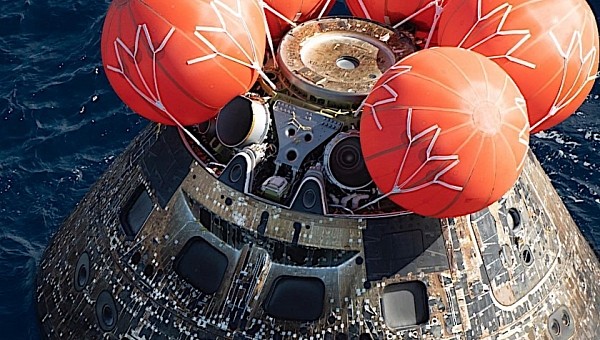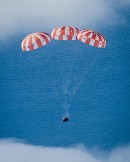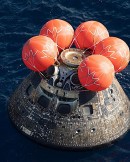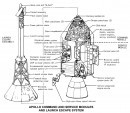On Sunday, December 11, 2022, the first mission of humanity’s second Moon exploration program ended. It ended with the Orion spaceship making a perfect splashdown in the Pacific Ocean, somewhere off the coast of Baja California, at exactly 9:40 a.m. PST (17:40 GMT/18:40 CET).
And by a coincidence of cosmic proportions, it did so almost 50 years to the day after the Apollo 17 Moon landing, the last mission to take humans to the Moon as part of the Apollo program.
The Artemis I mission, slow to get off the ground, managed to achieve all of its goals of proving the technology intended to safely carry humans to the Moon and back works. At least, that’s the impression we get from the info we have available, as NASA engineers have a lot of work ahead of them crunching all the numbers behind the effort.
Artemis I took off on November 16, with the Orion spaceship sent on a 25+ day mission around the Moon by the Space Launch System rocket. Actually, not just around the Moon, as Orion is now officially the record holder for traveling “farther than any spacecraft designed to carry humans and return them to Earth” - 270,000 miles (435,000 km) away from our home world. The ship traveled a total of more than 1.4 million miles (2.25 million km) during its entire flight, as per NASA.
While for the rest of us the Artemis I mission is pretty much over, NASA engineers are just beginning their work. The spacecraft will be unloaded of its cargo in the coming days and humans will have a look at each of the items Orion transported around the Moon.
Separately, the ship’s capsule and heat shield will be turned inside out over the next few months, in search of potential issues that might affect future crewed missions.
The second mission of the program, Artemis II, is for now scheduled to take place in the spring of 2024. This one will have humans on board, but they will not land on the Moon – that honor belongs to Artemis III. Instead, Artemis II astronauts will be transported far around the Moon and then returned home.
The Artemis I mission, slow to get off the ground, managed to achieve all of its goals of proving the technology intended to safely carry humans to the Moon and back works. At least, that’s the impression we get from the info we have available, as NASA engineers have a lot of work ahead of them crunching all the numbers behind the effort.
Artemis I took off on November 16, with the Orion spaceship sent on a 25+ day mission around the Moon by the Space Launch System rocket. Actually, not just around the Moon, as Orion is now officially the record holder for traveling “farther than any spacecraft designed to carry humans and return them to Earth” - 270,000 miles (435,000 km) away from our home world. The ship traveled a total of more than 1.4 million miles (2.25 million km) during its entire flight, as per NASA.
While for the rest of us the Artemis I mission is pretty much over, NASA engineers are just beginning their work. The spacecraft will be unloaded of its cargo in the coming days and humans will have a look at each of the items Orion transported around the Moon.
Separately, the ship’s capsule and heat shield will be turned inside out over the next few months, in search of potential issues that might affect future crewed missions.
The second mission of the program, Artemis II, is for now scheduled to take place in the spring of 2024. This one will have humans on board, but they will not land on the Moon – that honor belongs to Artemis III. Instead, Artemis II astronauts will be transported far around the Moon and then returned home.
I applaud the @NASA team for their work on completing a successful Artemis I mission. We’re one step closer to returning astronauts to the moon. pic.twitter.com/mv8tAk1cra
— Vice President Kamala Harris (@VP) December 11, 2022


















